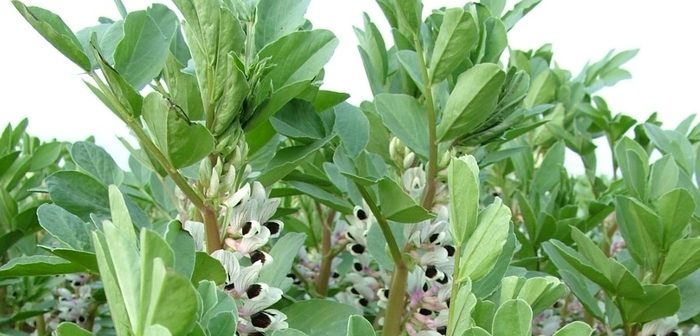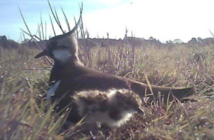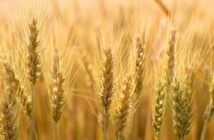The pulse area for harvest 2020 looks set to grow, and to a greater extent than was thought likely six months ago. A tough autumn has driven many growers to look at spring cropping, and issues with already-drilled oilseed rape crops will add to spring sowings this year, John Swire takes a look.
For this reason, spring beans and combining peas are a prime choice in the minds of many growers, and this article looks at spring pulse crop husbandry and variety choice.
Spring beans
According to the PGRO spring beans are best drilled as early as possible from late February onwards provided soil conditions are satisfactory. Later sowing delays harvest and may subject beans to summer drought stress at flowering.
Beans do not require a fine seedbed and will tolerate cloddy conditions, although weed control may be poor, and over-cultivationshould be avoided. Beans are sensitive to soil compaction, but are more tolerant of consolidation and waterlogging than peas.
Ploughing-in is less successful for spring beans, and better yields are achieved where they are drilled conventionally. Sowing depth is important and the seed should be covered by a minimum of 3cm of settled soil where pre-emergence herbicides are used.
Seed rate and plant population for spring beans based on data from the Optibean project shows that maximum yields are obtained from 60-65 plants/ m2. But when taking into account seed cost and produce value, the economic target population is 50-55 plants/m2. This is for soils/areas that produce typical bean growth. For fertile soils, or areas that produce very vigorous growth, target populations should remain at 35-45 plants/m2.
Field loss for spring beans is expected to be 5%. PGRO has produced a seed rate calculator as part of the Optibean Excel-based spreadsheet and is available from the PGRO website (www.pgro.org).
Fertiliser requirements of beans are small and no N is required. Where P and K fertiliser is required, it is essential to put it deep enough into the seedbed to allow full utilisation by the crop. Broadcast fertiliser should be ploughed shallow or appliedover the furrows. It can then be worked in by subsequent cultivations, but the production of too fine a tilth and compaction mustbe avoided.
The amounts of phosphate and potash are appropriate to bean yields of 3.5 t/ha. Where yields are likely to be greater or smaller,phosphate and potash applications should be adjusted accordingly.
Combining peas
For cultivations, land is often ploughed in the autumn. This allows natural weathering to aid in the production of adequate tilth in the spring with minimal cultivations (stale seedbed). Peas are sensitive to compaction. On lighter soils, spring ploughing is an option where over-wintered stubbles are required. Here, drilling with a cultivator drill on spring ploughed land is popular. In some situations, peas can be successfully established by direct drilling or min-till.
The benefits of early drilling can include higher yield, earlier maturity and some escape from pests. However, it is more importantto drill peas when soils are drier and less prone to compaction.
Target plant populations should be set according to the type of the pea variety being sown. The optimum population depends on seed cost and return of produce per hectare with adjustments made accordingly. Typical plant populations for given varieties are available on the PGRO web site. Targets could be lower on fertile soils. Higher populations may be beneficial on light, drought prone soils, or where there is a risk of attack from birds. The web site also gives a seed rate formula.
Fertiliser requirements of combining peas are small and no N is required. Where P and K fertiliser is required, it should be put deep enough into the seedbed to allow full utilisation by the crop. Broadcast fertiliser should be ploughed shallow or applied over the furrows. It can then be worked in by subsequent cultivations, but the production of too fine a tilth and compaction must be avoided.
The amounts of phosphate and potash are appropriate to pea yields of 4 t/ha. Where yields are likely to be greater or smaller, phosphate and potash applications should be adjusted accordingly.
Good weed control is essential in the pea crop, since it is not very competitive and is easily dominated by weeds. Efficient control will ease combining and facilitate rapid drying in addition to increasing yield.
Variety review
Seed availability for specific varieties will be an issue this spring, so the review comments on variety performance are based on the PGRO Recommended List. Availability – especially for the newer varieties – needs to be discussed with your seed merchant/advisor.
Spring Beans
For spring beans, Lynx remains the top variety on the PGRO Recommended List with proven yield and agronomic characters – including its downy mildew rating of 7. The well-established varieties Fanfare, Vertigo, Mallory and LG Cartouche remain fully recommended, and are joined by three new provisionally recommended varieties – Macho, LG Raptor and Ghengis.
Yukon is new variety that will be of particular interest to northern growers in the future with the highest earliest ripening rating as well as the highest downy mildew rating.
There are two varieties in the LVC (low vicine/convicine) category which was introduced into the PGRO Recommended List last year. Victus and Tiffany have a high protein and low vicine and convicine content, attributes that will help to further develop the UK pulse market with end users – for example, increasing the use of beans for processing and food ingredients.
Combining Peas
White peas
Manager, Karpate and Kareni are the fully recommended varieties and are joined by newly added Orchestra, with high yield and thousand seed weight, and Kameleon with exceptional yield performance.
Large blue peas
There is a wide choice of fully recommended varieties for growers, led by Bluetime, Karioka and Blueman – which has the highest rating for downy mildew. Prophet, Daytona, Vertix and LG Stallion all remain with a full recommendation Newer varieties Mankato and Croft with P2 recommendation are joined this year by Kactus, Greenwich and LG Aviator.
Small blue peas
Small blue Greenwood and maples Mantara and Rose are fully recommended varieties.
Sakura remains the only fully recommended variety, with two new varieties – Banshee and Octavia – having a provisional recommendation. Both are a little lower yielding than Sakura, with downy mildew ratings lower, but standing ability a little better.




